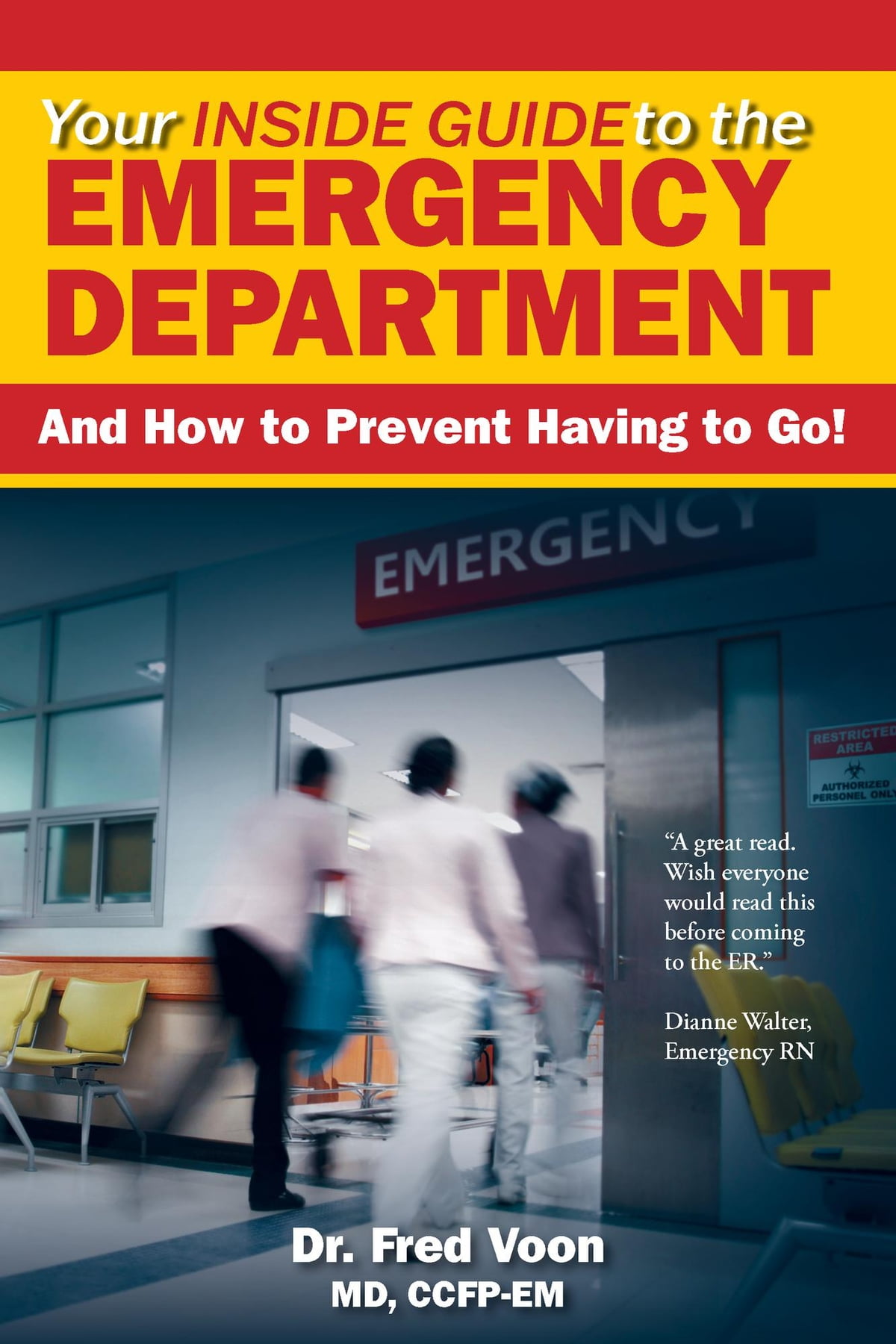Book review: Your inside guide to the emergency department: And how to prevent having to go!
 |
| Your inside guide to the emergency department: And how to prevent having to go! By Dr Fred Voon. FriesenPress, 2021. ISBN: 978-1-7776034-0-3. Paperback, 142 pages. |
This 142-page book with a self-explanatory title has been written with Canadian patients in mind. The author is an emergency physician in Victoria, BC. Part 1 lays out what patients should expect to encounter if they’ve decided to attend the emergency department. Part 2 outlines frequent patient frustrations, including wait times, and offers guidance about when to visit the emergency department and how to decide if a visit is required. Part 3 delves into an emergency department’s physical layout and describes the professionals who work there. Part 4, the bulk of the book, is devoted to home remedies for common symptoms and conditions. Appendices and glossaries define terms used in the book, and references are included.
Dr Voon, using easily understood language in conversational form, has done a commendable job of advising patients how a Canadian emergency department functions and what to expect, and not expect, when visiting. While the book’s title suggests that readers may discover strategies to prevent a visit, less than three pages are devoted to a discussion of alternatives to an emergency-department visit, and while health information phone lines (e.g., 811) are discussed, there is no discussion of common alternatives such as walk-in or urgent care clinics, or telemedicine. Additionally, undermining the hopeful tenor of the title is the following disclaimer in the foreword: “Even if the information in this book suggests medical attention is not needed, readers who think they have an emergency medical concern can and should go their nearest Emergency Department (ED) or call an ambulance. If in doubt, get checked out!” This medicolegal disclaimer reflects an important truth understood by all emergency-department personnel: it is tough to know which patients really need the services of the emergency department prior to workup.
Of course, a 142-page paperback cannot be exhaustive; authors of concise guides must make the hard choice to exclude certain material if critical topics are to receive adequate treatment. In this regard, it is intriguing to note that while two pages are devoted to the home diagnosis and reduction of nursemaid’s elbow, there is no discussion of the critical role of the emergency department in assisting patients with mental-health crises. Nor is there guidance as to how patients living in proximity to more than one hospital should decide which one to visit, or a discussion of the charges facing uninsured or out-of-province patients.
Setting those concerns aside, Dr Voon has written a book that is fun to read and offers an insider’s perspective that patients will appreciate. In particular, I see it as a useful addition to clinic or emergency-department waiting rooms, where our long-suffering patients wait their turn and ponder why it is taking so long.
—David Esler, MD, CCFP(EM)
Dr Esler has practised emergency medicine in and around Vancouver for 34 years. He is a clinical associate professor of emergency medicine at the University of British Columbia and a member of the BCMJ Editorial Board.
hidden
 |
| This work is licensed under a Creative Commons Attribution-NonCommercial-NoDerivatives 4.0 International License. |
